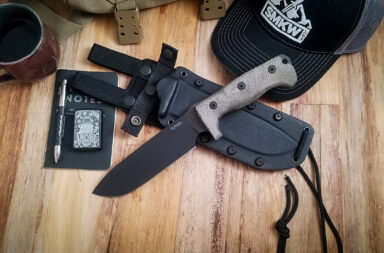You probably know him best as the non-barefoot half of the original cast of the Discovery Channel show “Dual Survival,” but that was five years and two shows ago, and Dave Canterbury is so much more than that. He’s the author of two books (with a third on the way), the co-owner of the Pathfinder School, LLC where he teaches the art of self-reliance, and he’s the co-owner of Self-Reliance Outfitters. Oh, and if that wasn’t enough, he’s also been an integral part of the design team for the Pathfinder Knife Shop’s (PKS) Scorpion knife. In other words, he’s a very busy man. When we caught up with Dave on the phone, he was unpacking from another round of teaching at his Pathfinder School in southeast Ohio and trying to put the finishing touches on his third book before it goes into print later this year.
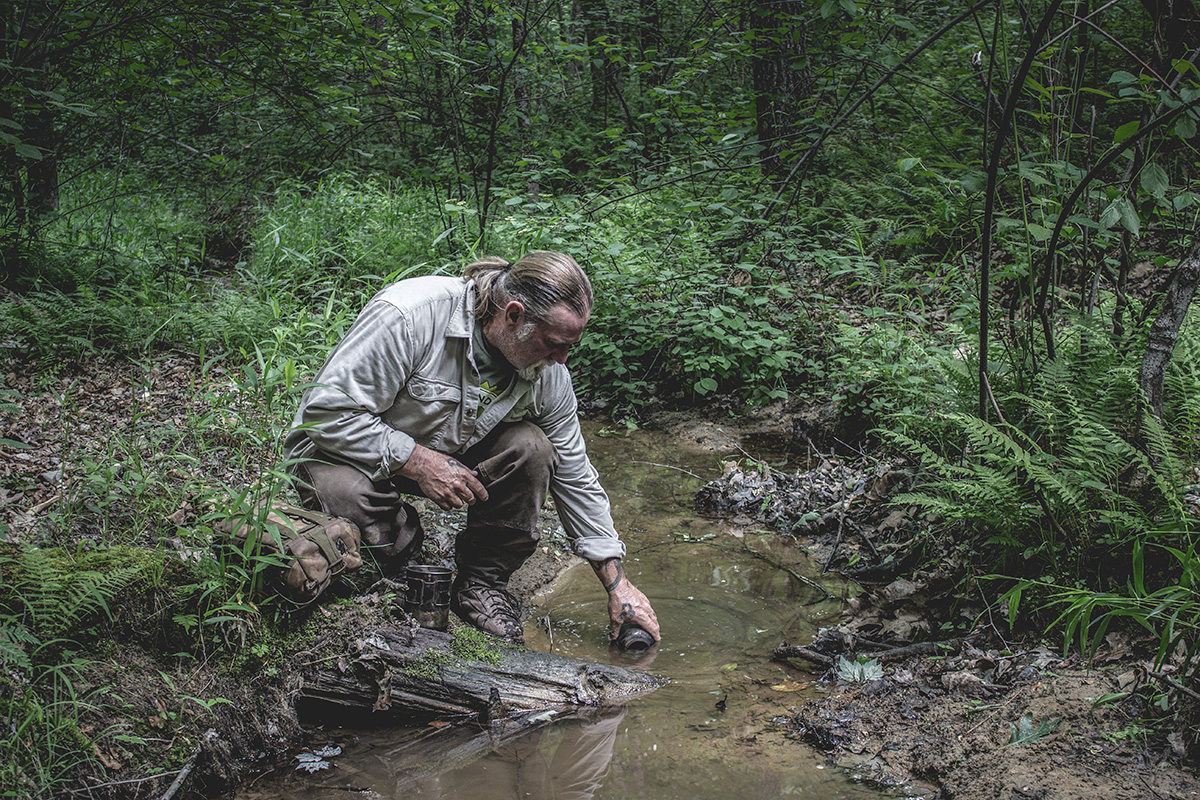
“They’re still showing reruns of all the old shows I’ve done,” Dave tells us. There’s three, and he’s not bragging. He feels like all of the shows he’s done give him the opportunity to reach folks that he may not have otherwise reached. “It’s a great opportunity to get out and teach the masses that may not be able to come to a school – so you reach a lot of people you may not normally reach.”
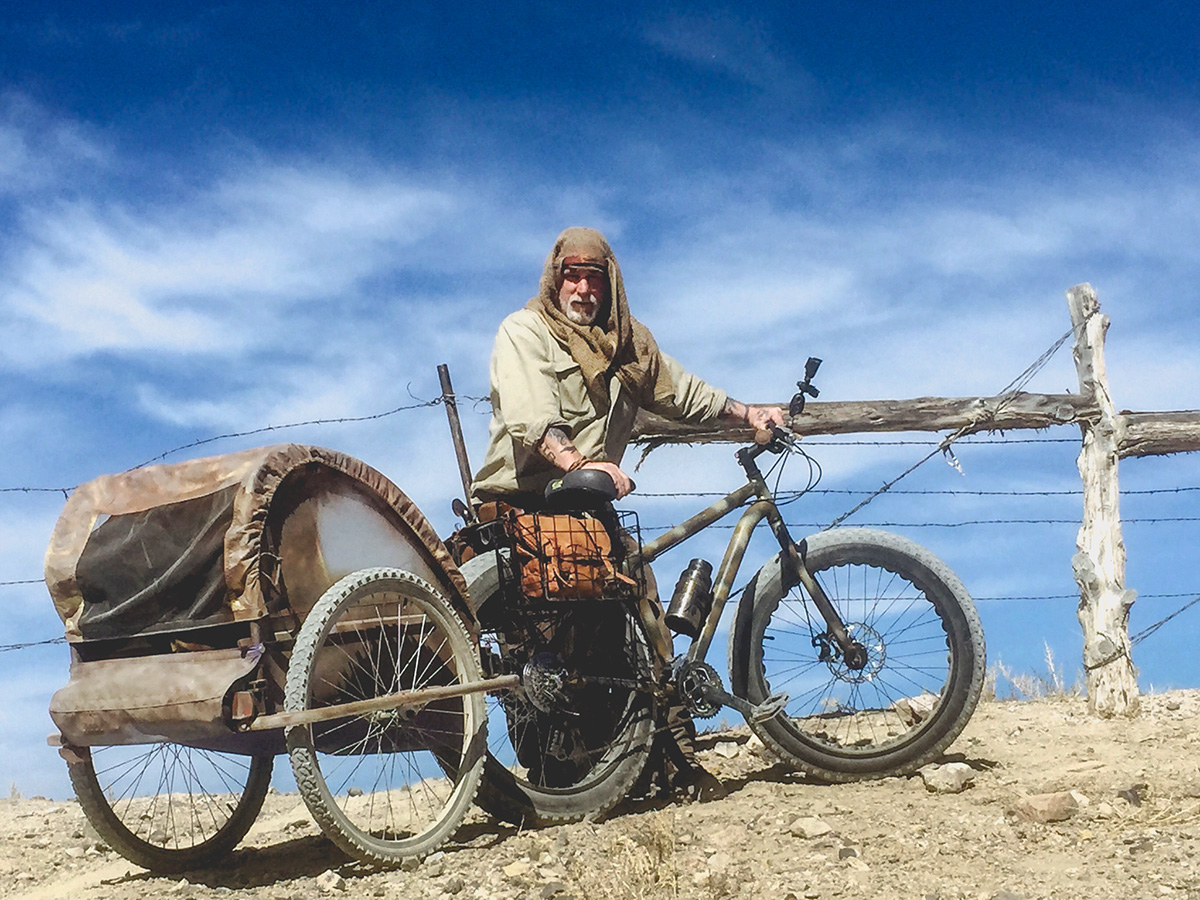
And while it’s clear he enjoyed each of his TV show experiences, it’s clear that Dave doesn’t really want to talk about them. He’s far more interested in jumping into a discussion about what spurned him to write Bushcraft 101 and Advanced Bushcraft, and why he’s committed to completing his third book which focuses on Bushcraft cooking. Dave is a survivalist who teaches people the art of self-reliance, and he deftly steers our phone discussion to his passion – to what he wants to discuss.
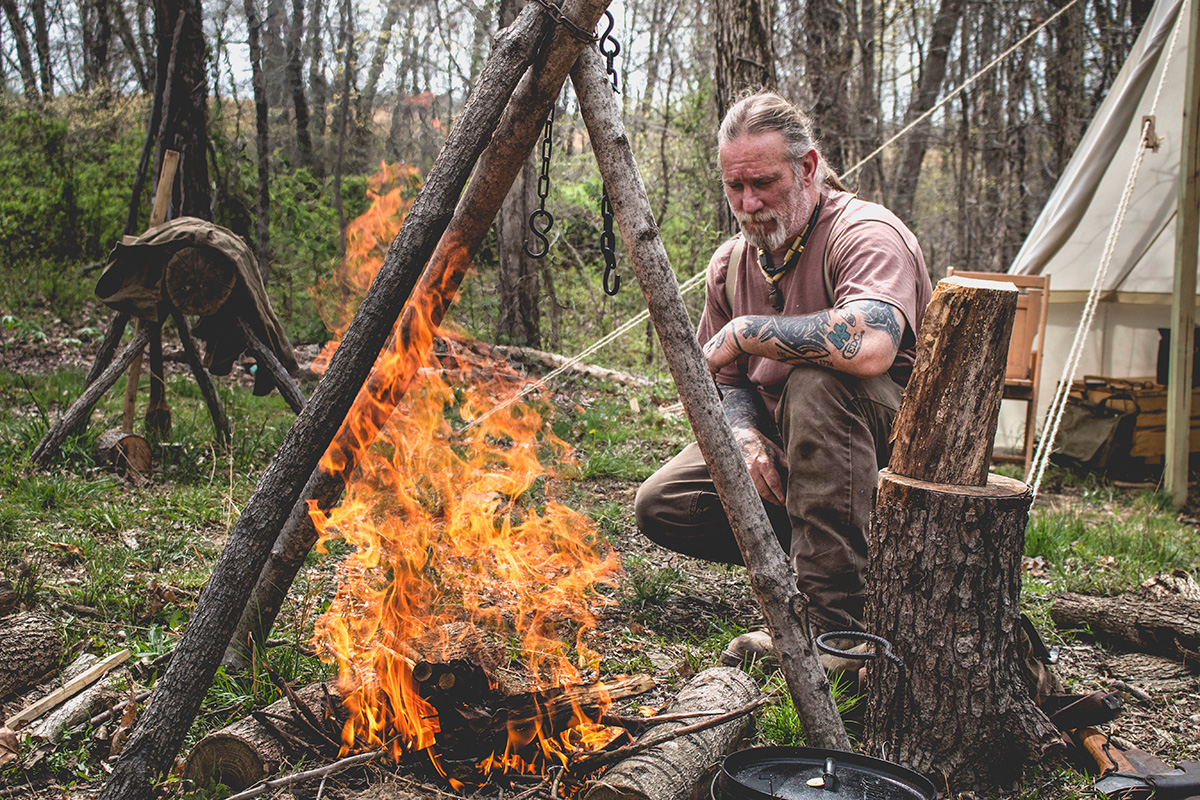
At his Pathfinder School in southeast Ohio, people from all over the world come to learn self-reliance. They attend classes that last from 2-5 days, and they walk away with anything from basic survival skills to advanced knife-forging and survival crafting and hunting skills. As Dave tells us, “We get all kinds of people – from the average, everyday guy who coaches softball during the week after work and goes fishing on the weekends to the guy who is ex-military or still in the military – firefighters, law enforcement, search and rescue guys, and then we get avid campers and backpackers and things like that – people who just want to learn those survival techniques that work when they’re out backpacking and adventuring. They want to gain those skills in outdoor survival. And we have guys that want to learn more advanced things too – how to craft knives – how to do wood carving – how to make their own gear. Our classes are more all-inclusive than anywhere else in the U.S.”
Since we had an expert on the line and we’re knife guys, we asked Dave what two cutting tools he’d want in a survival situation. His answer made it clear to us that we should probably enroll in the Pathfinder School immediately. “The choice of cutting tools is truly an environmental and seasonal choice that everyone has to make for themselves,” Dave says. “A belt knife is imperative, but the other tool is based on environmental and seasonal need. If I’m down South, I want a machete. If I’m up North, I want an ax or a saw.”
“The saw is an underrated tool. You can process a lot more wood with a bow saw than you can with an ax – with a lot less energy and a lot less calories. The problem is that you can’t really do any shaping with a saw. So, if you’re going out and you’re trying to build something, you’re going to want an ax. If you’re trying to keep warm at night, you want a saw.”
While environment and season affect the choice of the second cutting tool, Dave is adamant about his choice of first tool: the belt knife. He should be. The Scorpion and Scorpion HD which he designed for Pathfinder Knife Shop is just about the perfect belt knife.

As Dave says in one of his videos and humbly reiterates in our call, there’s no requirement that you have a PKS belt knife in order to survive. True. But there are some very strong arguments to be made in its favor.
The Scorpion is an extraordinarily robust woodsman style knife, and each one is made by hand. At approximately 10” overall, the Scorpion sports about a 5” 1095 high carbon steel, blued blade that comes in either 3/16” or 1/8” thicknesses. You can also choose walnut or linen micarta handles, as well as various sheath options.
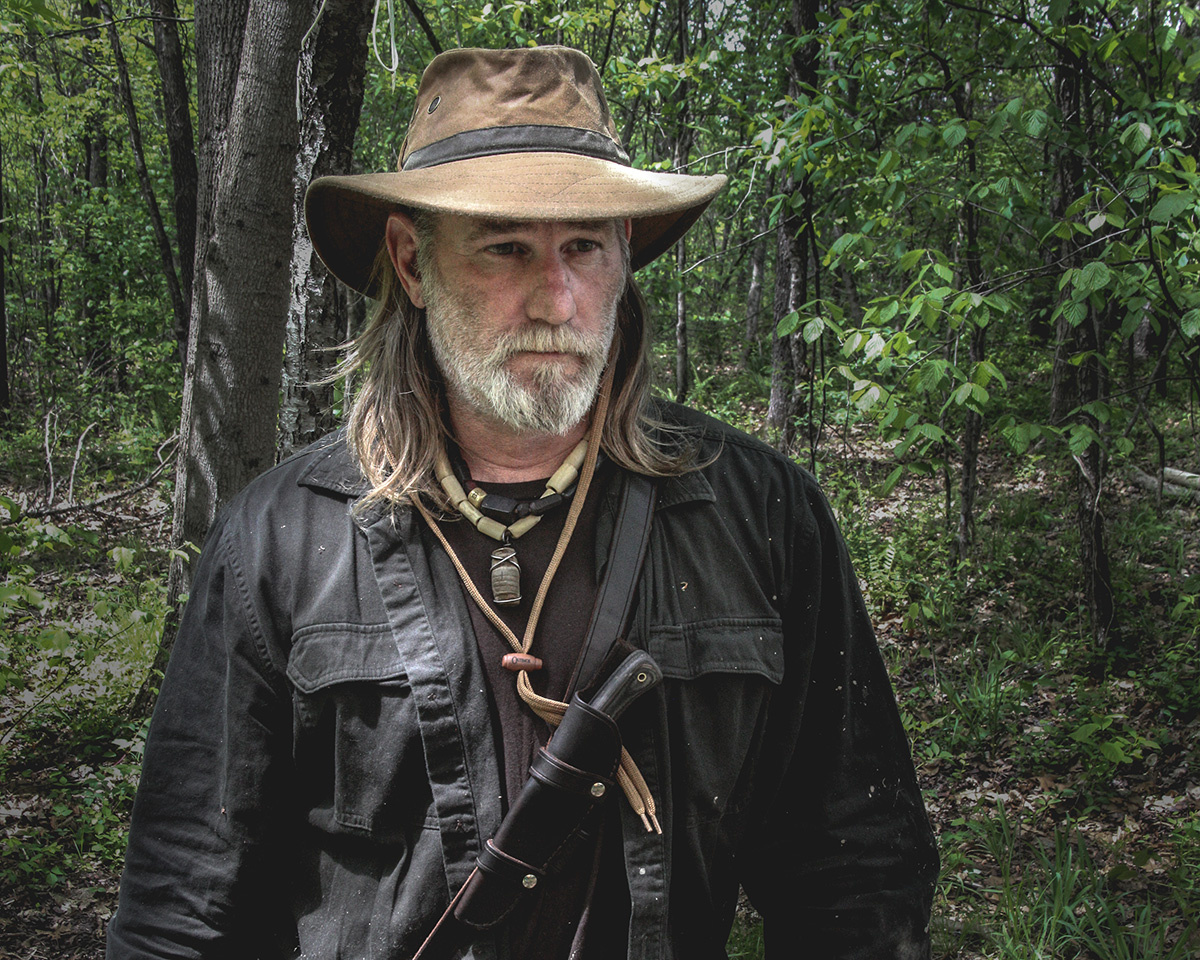
“There’s a lot of things that Scorpion knife is designed to do. First of all, it’s designed to do fine carving work. You can whittle with it like it’s your pocketknife,” Dave tells us.
“The second thing is that it’s a tool that is built around making fire. So it’s good for making fine shavings and tinder but it also has a 90-degree spine on it. And the reason for that is two-fold: (a) it’s made to process a branch without damaging or sacrificing your blade, which you may need later. And (b) that 90-degree edge is great at striking a ferro rod to create sparks to make a fire. It’s also got a high carbon steel blade with a very good Rockwell hardness and will actually strike sparks off the blade with a hard rock to start a fire. So, you have a multifunctional fire-starting tool as well as a wood-processing, game-processing tool in your hand when you pick up that knife.”
One of the many things we learned quickly from our conversation with Dave Canterbury is this. The Pathfinder school prepares individuals for a survival situation in ways that most people don’t even think about. We asked this simple question: If we went on a day hike in the Smoky Mountains and suddenly find that we’re lost, what’s the first thing we should do in that situation? And, according to Dave’s answer, we weren’t even fully prepared to be lost in the woods.
As Dave explained, “It depends. What did you do before you got lost? Did you have a game plan? Did you tell someone where you’re going? Did you tell somebody what time you’d be back? Did you tell someone what trail you were taking off the trail head?”
“If you did all those things, the best thing you can do is stay right where you are – not try to find your way out and get any further lost than you already are. Give yourself some kind of rescue signal after you’ve taken care of your creature comforts (fire, shelter, water). Put out some flags. Pull that orange t-shirt out of your bag, and put it on. Make an effort to be seen. Because if you made that game plan – someone is going to come looking for you or someone may stumble by and see you.”
We were completely unaware that we needed a “game plan” for a day hike, so we had to ask, “What if you didn’t have a game plan?”
“If I didn’t tell anybody where I was going – that’s a different story,” Dave laughs. “Now I have a whole different set of issues. Again – survival priorities are first – fire, shelter, water. Signal for rescue is after that, but then I need to really evaluate things – probably need to go to high ground somewhere. Do I have a map? Do I have a compass? Do I know how to use them? Do I know where I started, because if I know where I started and I have a map, I can most likely find out where I’m at by doing some type of navigation assessment. Do I know that Highway 35 is due east of me and it runs linear for a hundred miles? If I find due East – I can start walking and sooner or later I can thumb a ride. Everything is situational.”
We announce that we should definitely take at least his basic survival course now, and Dave laughs harder saying, “I can tell you that I have had multiple emails from people saying that the training they took at [The Pathfinder School] actually saved their lives – now, that’s a pretty dramatic statement, but it probably just means that they’re more comfortable in a situation that they considered to be an emergency.”
We can tell by the excitement in his voice at this point that Dave loves this stuff. He lives, eats, and breathes self-reliance – and he’s enjoying telling us more at this point.
He explains that most people just aren’t prepared,“Did you bring something with you to cover the bases? You can make a very small day pack – like 5 or 6 pounds of gear in that day pack that will always give you the ability to (a) make fire (b) build shelter (c) signal for rescue and be able to boil and consume water – and can you do those things well and quickly?”
“Something that we really stress in the Pathfinder School is that the emergency items that you carry have to be multifunctional – if you have something in your backpack that can only do one thing well, you need to get rid of it and find something that can do three things in passable fashion. Your compass should work well as a compass, but it should have a mirror so it’s a signaling device and a first aid device and maybe have a magnifying glass on it – so now it’s a first aid device and a fire-starting device. It’s not necessarily that you have to have this brand or this type or this name it’s what are the attributes of every piece of gear that I’m carrying that make it multifunctional towards my basic survival needs, and can I meet them with what I have? You can do well with ten pieces of gear [in your bag].”
Here are the “Ten C’s” that Dave says will help you in a survival situation. If you want to learn more about how they’re used, we suggest you sign up for a Pathfinder School class. He’ll not only teach you what they are, he’ll make sure you can use them. Note: The choices below are ours, not Dave’s.
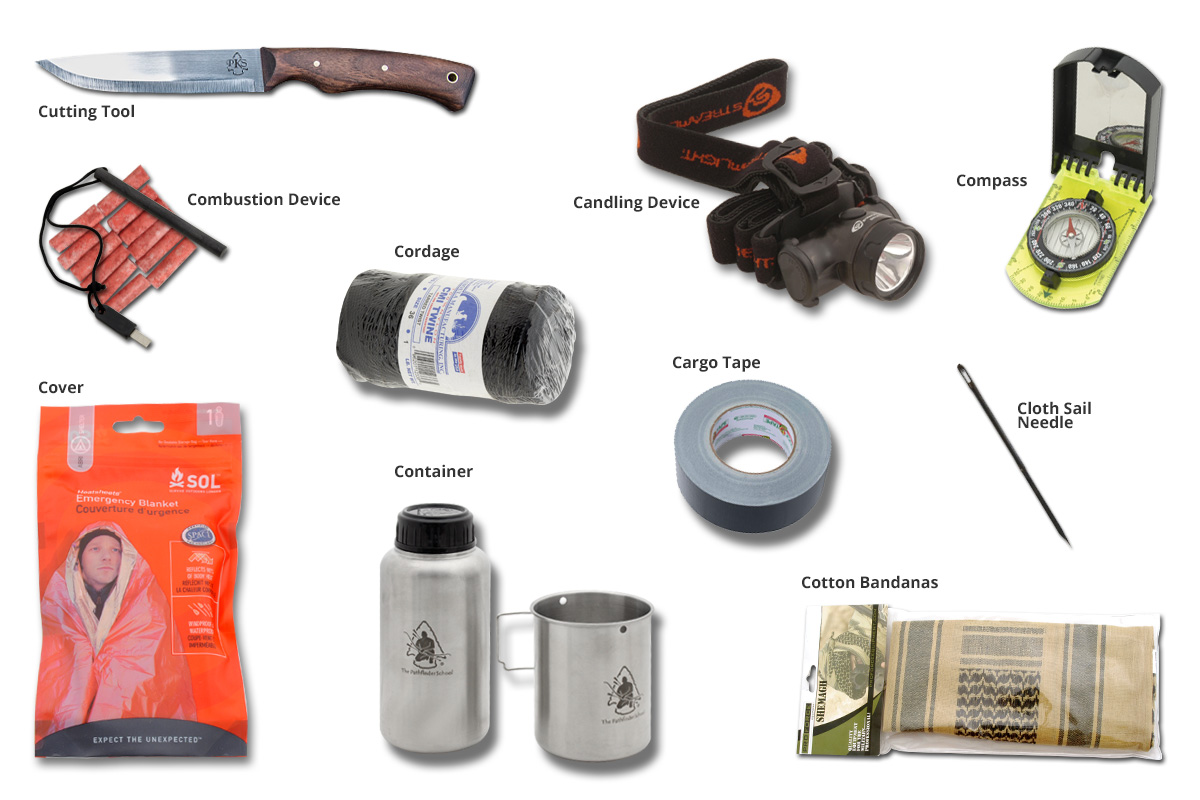
Cutting Tool
PKS Scorpion (our choice)
Combustion Device
Self Reliance Outfitters HD6 Ferrocerium Rod with Striker
Self Reliance Outfitters Micro Inferno – 12pk
Cover
SOL Heatsheets Emergency Blanket – One Person
Cordage
Self Reliance Outfitters No. 36 CMI Twine – Tarred Twist Black
Container
Self Reliance Outfitters GEN3 Pathfinder Stainless steel 32oz Bottle and Nesting Cup Set
Candling Device
StreamLight Enduro LED Headlamp – Black
Cargo Tape
Compass
Explorer Compass with Signal Mirror
Cotton Bandanas
Proforce Shemagh-Sand/Black
Here’s a link to Self-Reliance Outfitters where you’ll find more info about Pathfinder Schools


